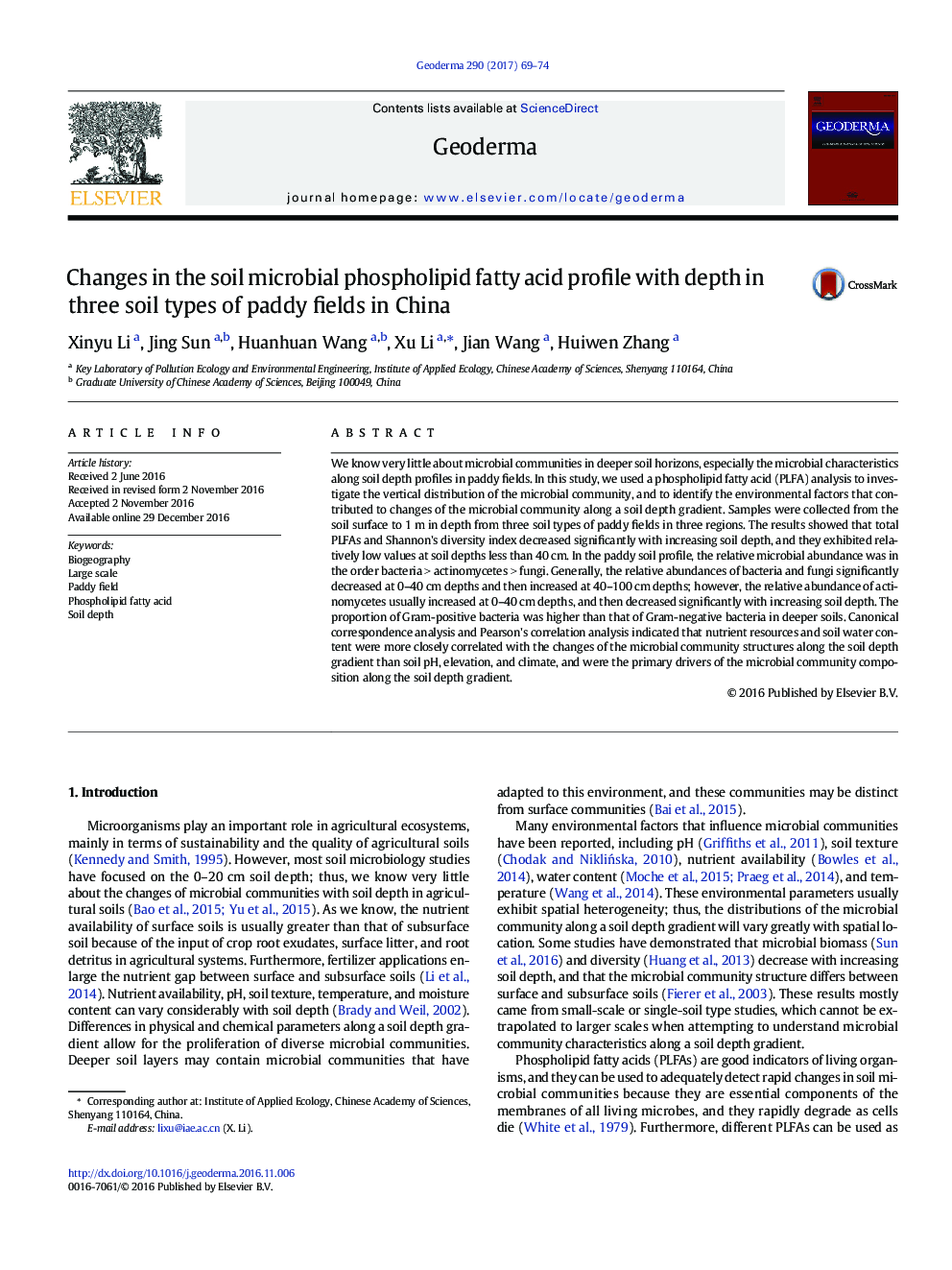| کد مقاله | کد نشریه | سال انتشار | مقاله انگلیسی | نسخه تمام متن |
|---|---|---|---|---|
| 5770427 | 1629427 | 2017 | 6 صفحه PDF | دانلود رایگان |
- Soil properties and microbial groups had similar changes with depth in three regions.
- The total PLFAs and diversity index were relatively low at greater than 40Â cm depths.
- The relative microbial abundance was in the order of bacteria > actinomycetes > fungi.
- Nutrient resource and water content were main factors to affect microbial community.
We know very little about microbial communities in deeper soil horizons, especially the microbial characteristics along soil depth profiles in paddy fields. In this study, we used a phospholipid fatty acid (PLFA) analysis to investigate the vertical distribution of the microbial community, and to identify the environmental factors that contributed to changes of the microbial community along a soil depth gradient. Samples were collected from the soil surface to 1 m in depth from three soil types of paddy fields in three regions. The results showed that total PLFAs and Shannon's diversity index decreased significantly with increasing soil depth, and they exhibited relatively low values at soil depths less than 40 cm. In the paddy soil profile, the relative microbial abundance was in the order bacteria > actinomycetes > fungi. Generally, the relative abundances of bacteria and fungi significantly decreased at 0-40 cm depths and then increased at 40-100 cm depths; however, the relative abundance of actinomycetes usually increased at 0-40 cm depths, and then decreased significantly with increasing soil depth. The proportion of Gram-positive bacteria was higher than that of Gram-negative bacteria in deeper soils. Canonical correspondence analysis and Pearson's correlation analysis indicated that nutrient resources and soil water content were more closely correlated with the changes of the microbial community structures along the soil depth gradient than soil pH, elevation, and climate, and were the primary drivers of the microbial community composition along the soil depth gradient.
Journal: Geoderma - Volume 290, 15 March 2017, Pages 69-74
